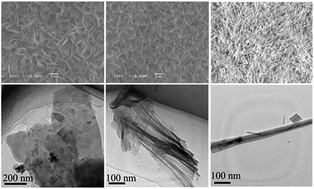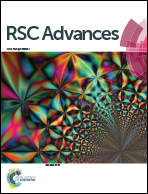Facile synthesis of Co3O4 with different morphology and their application in supercapacitors†
Abstract
In this article, direct growth of Co3O4 with different morphologies on nickel foam is successfully achieved via a simple hydrothermal method by changing the volume ratio between ethanol and water. The morphology and structure of the as-prepared samples are examined by scanning electron microscopy, transmission electron microscopy, X-ray diffraction and Fourier transform infrared spectroscopy. The electrochemical performance of the Co3O4 electrodes is investigated as pseudocapacitor material by cyclic voltammetry and galvanostatic charge/discharge test in 3 mol L−1 KOH solution. Results show that the solvent composition plays an important role not only in the morphology but also in the capacitance. Co3O4 with a honeycomb structure obtained from the volume ratio of C2H5OH/H2O = 1 exhibits the highest capacitive performance, 2509.4 F g−1 at 1 A g−1 and 1754 F g−1 at 10 A g−1, which is much larger than that prepared in the pure water and pure ethanol solvent. The electrode also has a satisfactory cycling performance with capacity retention of 74% after 1000 cycles at 10 A g−1. The enhanced electrochemical performance is ascribed to the honeycomb nanostructure allowing facile electrolyte flow which speeds up electrochemical reaction kinetics. These findings may open up the opportunity for optimizing the hydrothermal synthesis conditions to control the morphology and performance of the products.


 Please wait while we load your content...
Please wait while we load your content...